

具体描述
内容简介
本书共有六个模块包括:识读零件图和装配图的尺寸公差;工件尺寸测量;工件几何公差的检测;工件表面粗糙度检测;螺纹公差及检测;典型零件图技术要求分析等。并通过16个项目,27个任务来较全面地描述产品生产中所涉及的《公差配合与技术测量》的工作内容与技术要求。本书内容丰富,循序渐进、叙述精练、图文并茂、通俗易懂,书中引有大量的生产实例,紧密结合生产实际,具有较高的参考价值。为便于教学,本书配套有电子教案、助教课件、教学视频等教学资源。目录
前言模块一 识读零件图和装配图的尺寸公差 1
项目一 识读零件图的尺寸公差 2
任务一 识读接管的尺寸公差 2
任务二 识读用代号标注的尺寸公差 6
项目二 识读装配图的尺寸公差 14
任务一 识读传动系统装配图的配合尺寸 14
任务二 识读滚动轴承装配图的配合尺寸 20
模块二 尺寸的测量 24
项目一 线性尺寸的测量 24
任务一 用游标卡尺测量工件 24
任务二 用千分尺测量阶梯轴外径 31
任务三 用百分表测量偏心距 36
任务四 用内径百分表测量轴套内径 40
项目二 角度、 锥度测量 45
任务一 用游标万能角度尺测量角度 45
任务二 用极限量规测量锥度 51
模块三 几何公差与测量 56
项目一 形状公差与测量 56
任务一 直线度公差与测量 57
任务二 平面度公差与测量 62
任务三 圆度、 圆柱度公差与测量 65
任务四 线轮廓度、 面轮廓度公差与测量 71
项目二 方向公差与测量 77
任务一 平行度公差与测量 78
任务二 垂直度公差与测量 83
项目三 位置公差与测量 88
任务一 同轴度公差与测量 88
任务二 对称度和位置度公差与测量 95
项目四 跳动公差与测量 103
模块四 表面粗糙度与测量 110
项目一 用表面粗糙度对照样板测量表面粗糙度 111
项目二 用表面粗糙度仪测量表面粗糙度 115
模块五 螺纹公差与测量 121
项目一 用极限量规测量螺纹 121
项目二 用螺纹千分尺测量外螺纹中径 127
项目三 三针法测量梯形螺纹中径 131
模块六 典型零件图的技术要求与测量 137
项目一 轴套类零件的测量 137
项目二 叉架、 盘盖类零件的测量 142
项目三 箱体类零件的测量 147
附录 154
附表一 孔的基本偏差数值 154
附表二 轴的基本偏差数值 156
附表三 孔的极限偏差 158
附表四 轴的极限偏差 162
附表五 基孔制优先、 常用配合 167
附表六 基轴制优先、 常用配合 167
附表七 常用普通螺纹基本尺寸 168
附表八 内螺纹中径公差(TD2 ) 170
附表九 外螺纹中径公差(Td2 ) 171
附表十 常用内外螺纹的基本偏差 172
附表十一 标准公差数值 172
附表十二 轴承内圈极限偏差 173
附表十三 轴承外圈极限偏差 173
附表十四 任务评价表 174
参考文献 175
前言/序言
为贯彻《国务院关于大力发展职业教育的决定》精神, 落实关于“加强职业教育教材建设, 保证教学资源基本质量” 的要求, 确保新一轮职业院校教学改革顺利进行, 全面提高教育教学质量, 保证高质量教材进课堂, 全国机械职业教育教学指导委员会、机械工业出版社于2015 年11 月在杭州召开了专业教材建设启动会。在会上, 来自全国相关专业的骨干教师、企业专家研讨了新的职业教育形势下的课程体系和内容。本书是根据会议精神, 结合专业培养目标以及现阶段的教学实际编写的。本书根据最新的教学标准, 同时参考相应职业资格标准, 以公差配合与技术测量为主线,参照《产品几何技术规范(GPS) 》和《普通螺纹》现行国家标准编写而成, 通过对上述国家标准的解读、分析、应用, 用完成任务的形式, 每个任务都遵循“任务导入———任务描述———任务分析———知识链接———任务实施———任务评价———活学活用” 这一完整的行动过程, 教师作为这一教学过程的组织者与协调者, 使学生在快乐学习中掌握相关知识。
本书的建议学时为90 学时, 推荐采用理实一体化教学模式, 具体学时分配建议见下表。
模 块建议学时教学建议模块一 识读零件图和装配图的尺寸公差14模块二 尺寸的测量20模块三 几何公差与测量26模块四 表面粗糙度与测量6模块五 螺纹公差与测量11模块六 典型零件图的技术要求与测量13总学时90 教学时宜采用理实一体化教学模式,利用实际操作加深对理论知识的理解和巩固全书由杭州市萧山区高级技工学校吴宏霞、杭州市富阳区职业高级中学章建海主编。全书具体分工如下: 杭州市富阳区职业高级中学汪怡青、杭州市乔司职业高级中学章燕编写模块一, 章建海、贾耀平编写模块二, 巴荣飞、高永伟编写模块三, 钱锋编写模块四, 吴宏霞、林春苗编写模块五, 孙莹、杨先安编写模块六, 全书由吴宏霞、章建海进行统稿。本书由杭州市萧山区高级技工学校王尧林主审。
在编写过程中, 编者参阅了国内出版的有关教材和资料, 得到了杭州市职业教育机械教研大组的有益指导, 在此一并表示衷心感谢!由于编者水平有限, 书中不妥之处在所难免, 恳请读者批评指正。
编 者
用户评价
To put it simply, "Tolerances, Fits, and Metrology (Integrated Theory and Practice)" has served as a powerful key, unlocking entirely new avenues of understanding for me. My prior exposure to the realm of mechanical manufacturing was quite limited, and I tended to view these subjects as both distant and exceedingly complex. However, this book manages to demystify these concepts through a highly accessible and engaging narrative. I am particularly drawn to its "Integrated Theory and Practice" structure, which truly achieves a harmonious fusion of theoretical principles and their practical execution. It is not a book that compels rote memorization of formulas; rather, it employs a wealth of illustrative examples and visual aids to help you grasp concepts while simultaneously observing their application in real-world manufacturing settings. For example, when the book expounds on geometric tolerances, it transcends mere abstract definitions and symbols, opting instead for exceptionally vivid diagrams that visually depict the meaning of different geometric tolerances and their significance on actual components. It further elucidates methods for measuring these geometric tolerances in practice, specifying the appropriate instruments and detailing critical considerations. This approach is incredibly user-friendly for someone like me, who is starting from the ground up. Furthermore, the book's writing style is remarkably approachable, a stark contrast to the often stiff and obscure language found in some technical literature. It reads more like an experienced engineer generously sharing their insights and accumulated wisdom. I find myself especially drawn to certain chapters where the author intersperses practical tips and "tricks of the trade" gleaned from their actual work experience – these are invaluable nuggets of information that are rarely found in conventional textbooks but are exceptionally useful. It conveys the impression that this book is not merely imparting knowledge but is actively transmitting a methodology for problem-solving and the very essence of engineering. After finishing this book, my comprehension of mechanical components has deepened beyond mere superficial form; I can now perceive the inherent precision and exacting requirements concealed within them.
评分To be perfectly candid, my initial anticipation upon receiving "Tolerances, Fits, and Metrology (Integrated Theory and Practice)" was not particularly high. I've long held the perception that topics like tolerances, fits, and metrology are inherently dry, somewhat detached from my everyday experiences. However, this book has delivered an extraordinary and wholly unexpected delight! The aspect that has left the most indelible impression on me is its "Integrated Theory and Practice" design philosophy. It eschews the common practice of compartmentalizing theory and practical application, instead choosing to intertwine them intimately, allowing each to reinforce and complement the other. Every theoretical tenet presented within the book is accompanied by corresponding real-world application examples, thereby illuminating precisely how these theories manifest in practical scenarios. For instance, when discussing surface roughness, it doesn't merely define the concept, outline its representation methods, and explain the measurement principles; it delves deeply into the ramifications of different surface roughness grades on part performance and guides the reader in selecting appropriate surface roughness levels for diverse operating conditions. What I find even more thoughtful is the book's inclusion of sections dedicated to measurement error analysis and uncertainty evaluation. This is exceptionally beneficial for beginners like myself! It impresses upon us the understanding that measurement is not an absolute act of precision but rather a process that necessitates thorough error analysis and control. The numerous diagrams and tables within the book are remarkably clear and concise, facilitating my rapid comprehension of complex concepts. I particularly appreciate the explanations concerning the working principles and usage protocols of various measuring instruments; these are consistently accompanied by detailed procedural steps and cautionary notes, enabling me to acquire practical operational skills concurrently with new knowledge. This book has cultivated within me the impression that it is a patient and insightful mentor, consistently guiding me toward a deeper understanding of the intricacies of tolerances, fits, and technical metrology. It transcends the mere transmission of knowledge, actively fostering my engineering mindset and a rigorous scientific disposition, thereby offering profound and lasting benefits.
评分This volume, "Tolerances, Fits, and Metrology (Integrated Theory and Practice)," has been nothing short of a revelation, transforming my initial apprehension and unfamiliarity with the subject into a deep sense of curiosity and fascination. I particularly admire the book's pedagogical approach, which is commendably sequential. It doesn't overwhelm the reader with a deluge of complex concepts right from the outset. Instead, it begins by addressing the most fundamental questions: what is a tolerance, why are tolerances introduced, and how do they arise? It systematically guides the reader through these foundational aspects. Subsequently, it progressively delves into various types of tolerances, such as dimensional, form, and position tolerances, meticulously explaining the meaning, representation methods, and charting conventions for each. I especially appreciate the book's treatment of "fits." The author employs a wealth of vivid analogies and illustrative diagrams that make the principles of hole-based and shaft-based fits, and the varying assembly outcomes they can yield, instantly comprehensible. For example, when discussing transition fits, it aptly likens them to a scenario where "assembly is both easy and a certain connection strength is maintained," a far more intuitive explanation than a dry definition. The technical metrology section is equally compelling. The book meticulously details a wide array of commonly used measuring instruments, ranging from the basic vernier caliper and micrometer to more advanced dial indicators, gauge blocks, angle gauges, and even common coordinate measuring machines. Each instrument's description is remarkably thorough, encompassing its structure, working principle, usage protocols, precautions, and accuracy grades. Moreover, the book intersperses numerous practical measurement case studies, enabling me to apply the theoretical knowledge I've acquired to practical scenarios. For instance, when learning how to measure the outer diameter of a part, the book not only instructs on using calipers or micrometers but also elucidates how to select appropriate measurement points, how to accurately read the values, and how to mitigate measurement errors arising from poor contact. This "learning by doing" design ensures that the book is not merely imparting knowledge but also cultivating my ability to solve real-world problems. It feels as though this book is a comprehensive toolkit, replete with the keys to unlocking solutions for challenges in mechanical manufacturing and quality inspection.
评分我必须说,《公差配合与技术测量(理实一体化)》这本书,完全颠覆了我过去对技术类书籍的刻板印象。我一直以为这类书会是乏味的知识堆砌,充斥着晦涩难懂的术语和密密麻麻的公式,读起来昏昏欲睡。但这本书,真的是让我惊艳到了!它的“理实一体化”理念,真的是太绝了!它就像一位经验丰富的老工程师,把深奥的理论用最直观、最贴近实际的方式呈现出来。我最喜欢的是书中的图文并茂,大量的插图、表格和流程图,让原本抽象的概念变得生动形象。举个例子,在讲解角度公差时,书里不仅给出了理论公式,还配上了各种不同角度误差的示意图,让我一眼就能看出不同误差对零件功能的影响。更让我叫绝的是,书中将理论知识与实际操作无缝衔接。每一项测量技术的讲解,都会紧接着附带一些非常贴近实际生产的案例和场景。比如,在介绍如何测量轴的直径时,书里会详细描述在实际生产线上,工人师傅是如何操作的,会遇到哪些常见的困难,比如光线不足、表面有油污等等,然后给出相应的解决方案。这种“接地气”的讲解方式,让我觉得这本书不仅仅是一本教科书,更像是一本生产一线的操作指南。它让我明白了,那些所谓的“理论”,在实际生产中是如何落地生根,并且发挥至关重要作用的。我也在阅读过程中,学到了很多在学校里学不到的“潜规则”和“经验之谈”,这些宝贵的知识,无疑会大大缩短我从理论走向实践的学习曲线。它让我感觉,这本书不仅是在传授知识,更是在传递一种解决问题的思维方式和工程素养。
评分《公差配合与技术测量(理实一体化)》这本书,就像一本打开了我新世界大门的钥匙。我之前对机械制造领域了解不多,总觉得这些东西离我遥远又复杂。但这本书,用一种非常易于理解和接受的方式,将这些知识点娓娓道来。我特别喜欢它“理实一体化”的编排方式,真正做到了理论与实践的完美结合。它不是那种让你死记硬背公式的书,而是通过大量的实例、图解,让你在理解概念的同时,也能看到这些概念是如何在实际生产中应用的。比如,书里在讲解形位公差的时候,不仅仅是给出抽象的定义和符号,还会用非常生动的图示,展示不同形位公差的含义,以及它们在实际零件上的意义。它还会给出如何在实际中测量这些形位公差的方法,包括使用什么样的仪器,需要注意哪些细节。这对于我这样从零开始学习的人来说,简直是太友好了。而且,这本书的语言风格也非常亲切,不像一些技术书籍那样生硬和晦涩。它更像是一位经验丰富的老工程师,在和你分享他的经验和心得。我特别喜欢其中一些章节,里面会穿插一些作者在实际工作中的一些小技巧和窍门,这些往往是在书本上很难学到的,但却非常实用。它让我感觉,这本书不仅仅是在传授知识,更是在传递一种解决问题的智慧和工程的精髓。读完这本书,我感觉自己对机械零件的理解不再是停留在表面的形状,而是能够看到它们内部隐藏的精密和要求。
评分收到!这可真是一本让我爱不释手的好书!一开始我拿到《公差配合与技术测量(理实一体化)》的时候,说实话,心里还是有点小忐忑的。毕竟“公差配合”和“技术测量”这几个词听起来就带着点技术性,我担心会是一本枯燥乏味、满是公式和图表的理论书,读起来会非常吃力。然而,事实证明,我的顾虑完全是多余的。这本书最让我惊喜的一点就是它的“理实一体化”理念。它并没有把理论和实践割裂开,而是将两者巧妙地融合在一起。你不会觉得自己在死记硬背那些抽象的定义,也不会觉得那些实际操作的例子脱离了根本。书中的每一项技术测量方法,无论是尺寸测量、角度测量、形状和位置公差的检测,都配有清晰的原理讲解,让你明白“为什么”要这样做,以及背后的科学依据。更重要的是,它还会详细介绍在实际生产过程中,这些测量方法是如何应用的,会遇到哪些问题,以及如何解决。书中那些丰富的案例,简直就像把我带进了真实的工厂车间,让我身临其境地感受到了技术测量在实际生产中的重要性和挑战性。比如,在讲解千分尺的使用时,它不仅给了我详细的操作步骤,还用图文并茂的方式展示了不同类型的千分尺,以及它们各自的适用范围和精度等级。更让我印象深刻的是,书中还提到了很多测量中容易出现的误差来源,以及如何进行误差补偿和修正,这对于我们这些初学者来说,简直是保驾护航。有时候,我甚至会觉得作者就像一位经验丰富的老师傅,耐心地手把手教我如何握持工具,如何调整测量头,以及如何解读测量结果。这本书让我对“公差配合”这个曾经模糊的概念有了全新的认识,不再是冰冷的数字,而是连接设计与制造的生命线,是保证产品质量的基石。它让我明白,每一个微小的尺寸偏差,都可能对最终产品的性能产生蝴蝶效应。
评分我 must say, this book, "Tolerances, Fits, and Metrology (Integrated Theory and Practice)," has been an absolute game-changer for me. Initially, I picked it up with a healthy dose of skepticism. The very titles – "Tolerances," "Fits," and "Metrology" – sounded rather intimidating, conjuring images of dry, academic treatises filled with dense equations and complex diagrams. I braced myself for a mentally taxing slog. However, this book completely shattered those preconceived notions. What truly sets it apart, in my humble opinion, is its "integrated theory and practice" approach. It doesn't present theory in a vacuum, divorced from reality. Instead, it masterfully weaves together the fundamental principles with their real-world applications. You're not just memorizing abstract definitions; you're understanding the "why" behind every measurement technique, the scientific underpinnings that govern it. More importantly, the book delves deeply into how these measurement methods are employed in actual manufacturing processes, the challenges one might encounter, and, crucially, how to overcome them. The abundance of case studies included within its pages felt like being transported directly onto a bustling factory floor, allowing me to vicariously experience the vital role and inherent challenges of technical metrology in production. For instance, when explaining the use of a micrometer, it didn't just provide step-by-step instructions; it illustrated different types of micrometers, their respective application ranges, and accuracy classifications with vivid visuals. What particularly impressed me was the book's discussion on common sources of measurement error and methods for error compensation and correction, which is invaluable for novices like myself. At times, it felt as though the author was a seasoned craftsman, patiently guiding me through the nuances of tool handling, measurement head adjustment, and the interpretation of results. This book has fundamentally reshaped my understanding of "tolerances and fits," transforming them from mere numbers into the lifeblood connecting design and manufacturing, the very cornerstone of product quality assurance. It has illuminated how even the slightest dimensional deviation can trigger a cascading ripple effect on the ultimate performance of a product.
评分《公差配合与技术测量(理实一体化)》这本书,对于我来说,绝对是一场知识的盛宴,让我原本对这个领域的陌生和畏惧,逐渐转变为好奇和着迷。我特别喜欢书中那种循序渐进的教学方式。它不会一下子抛出大量的复杂概念,而是从最基础的“公差”是什么,为什么要引入公差,公差是如何产生的,这些最根本的问题入手,一点一点地引导读者理解。然后,再逐步深入到各种公差的类型,比如尺寸公差、形状公差、位置公差等等,并且详细解释了每一种公差的含义、表示方法以及在图纸上的标注规则。我尤其欣赏书中对于“配合”的讲解。作者用了很多生动的比喻和形象的图示,让我一下子就明白了基孔制和基轴制配合的原理,以及不同配合可能带来的不同装配效果。比如说,当书里讲解过渡配合时,它就形象地比喻成“既可以轻松装配,又能保证一定的连接强度”,这比干巴巴的定义要容易理解得多。而技术测量部分,同样精彩纷呈。书中详细介绍了各种常用的测量工具,从最基本的游标卡尺、螺旋千分尺,到更高级的百分表、量块、角度尺,甚至还有一些常用的三坐标测量机等。每个工具的介绍都非常详尽,包括它的结构、工作原理、使用方法、注意事项以及精度等级。而且,书中还穿插了大量实际的测量案例,让我能够将学到的理论知识应用到实践中去。例如,当学习如何测量零件的外圆直径时,书中不仅会告诉你使用卡尺或千分尺,还会告诉你如何选择合适的测量点,如何正确读取数值,以及如何避免因为接触不良而产生的测量误差。这种“学以致用”的设计,让我觉得这本书不仅仅是在传授知识,更是在培养我解决实际问题的能力。它让我感觉到,这本书就像一本万能的工具箱,里面装满了解决机械制造和质量检测难题的钥匙。
评分说实话,我拿到《公差配合与技术测量(理实一体化)》这本书的时候,并没有抱太大的期待。我一直觉得,公差配合和技术测量这种东西,听起来就非常枯燥,而且离我的日常生活好像有点远。然而,这本书却给了我巨大的惊喜!最让我印象深刻的是它“理实一体化”的设计理念。它没有把理论和实践孤立起来,而是将它们紧密地结合在一起,相互印证,相互补充。书中的每一个理论知识点,都会配有相关的实际应用案例,让你明白这个理论在现实生活中是如何发挥作用的。比如,在讲解表面粗糙度时,它不仅解释了表面粗糙度的定义、表示方法和测量原理,还会详细介绍不同表面粗糙度对零件性能的影响,以及在不同工况下,应该选择什么样的表面粗糙度等级。更让我觉得贴心的是,书中还穿插了一些关于测量误差分析和不确定度评定的内容。这对于我们这些初学者来说,真的是太有用了!它让我们明白,测量并不是一次性的准确,而是需要对误差进行分析和控制的。书中的一些图示和表格,都非常清晰明了,帮助我快速理解复杂的概念。我尤其喜欢书中关于各种测量仪器的工作原理和使用方法的讲解,它们都配有详细的步骤和注意事项,让我在学习新知识的同时,也能掌握实际操作的技巧。这本书让我感觉,它就像一位循循善诱的良师益友,在不断地引导我,让我一步步地深入理解公差配合和技术测量的奥秘。它不仅仅是在传授知识,更是在培养我的工程思维和严谨的科学态度,让我受益匪浅。
评分I must confess, when I first laid eyes on "Tolerances, Fits, and Metrology (Integrated Theory and Practice)," my expectations were rather subdued. I harbored a lingering belief that technical books of this nature were destined to be dry, monotonous compilations of information, saturated with arcane terminology and an overwhelming density of formulas – a recipe for instant slumber. However, this book proved to be an absolute revelation! Its "Integrated Theory and Practice" philosophy is nothing short of brilliant! It functions akin to a seasoned, veteran engineer, presenting intricate theoretical concepts in the most intuitive and practically relevant manner imaginable. What resonated most profoundly with me was the book's masterful integration of text and visuals. The copious inclusion of illustrations, tables, and flowcharts transforms abstract concepts into vivid, easily digestible material. To cite an example, when elucidating the nuances of angular tolerances, the book not only provides theoretical formulas but also accompanies them with schematic diagrams illustrating various forms of angular error, allowing for an immediate grasp of their impact on part functionality. What truly astounded me was the seamless transition the book facilitates between theoretical knowledge and practical application. Each discussion of a measurement technique is invariably followed by richly detailed case studies and scenarios drawn directly from real-world production environments. For instance, in its exposition on measuring shaft diameters, the book meticulously describes the operational procedures of factory floor technicians, the common obstacles they encounter (such as insufficient lighting or oily surfaces), and subsequently offers effective solutions. This "down-to-earth" pedagogical style makes the book feel less like a mere textbook and more like an indispensable operational guide for the production line. It has underscored for me how seemingly abstract "theories" are, in fact, the bedrock upon which practical production is built, playing a role of paramount importance. Furthermore, during my perusal, I've absorbed a wealth of invaluable "unofficial" insights and "trade secrets" that are seldom found in conventional academic texts, yet are immensely practical. These gems of knowledge will undoubtedly significantly shorten my learning curve in bridging the gap between theory and practice. It instills in me the feeling that this book is not merely disseminating knowledge but is actively cultivating a problem-solving mindset and a fundamental engineering ethos.
相关图书
本站所有内容均为互联网搜索引擎提供的公开搜索信息,本站不存储任何数据与内容,任何内容与数据均与本站无关,如有需要请联系相关搜索引擎包括但不限于百度,google,bing,sogou 等
© 2025 book.coffeedeals.club All Rights Reserved. 静流书站 版权所有

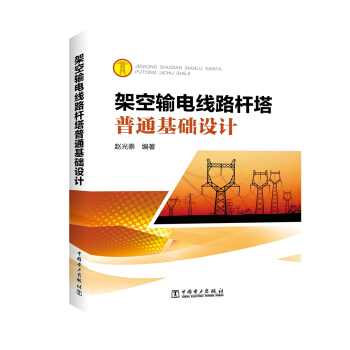
![交通运输行业高层次人才培养项目著作书系:公路通行能力手册 [China Highway Capacity Manual] pdf epub mobi 电子书 下载](https://pic.windowsfront.com/12114757/5978733dN36a469b7.jpg)

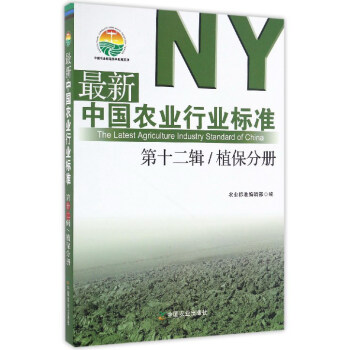
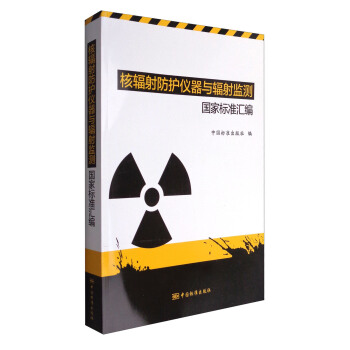
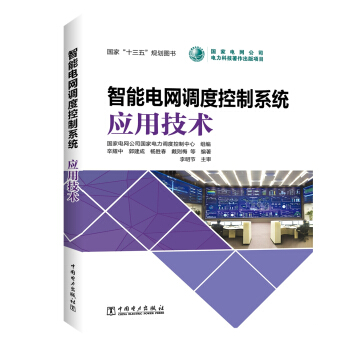
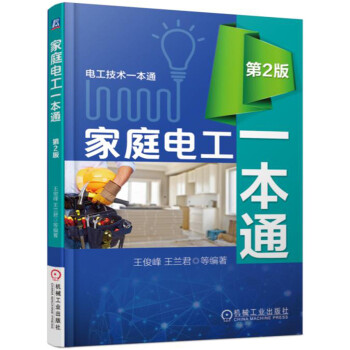

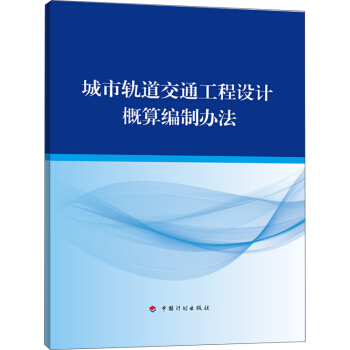
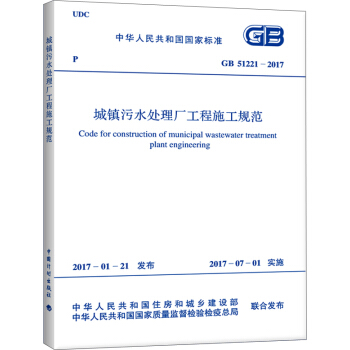
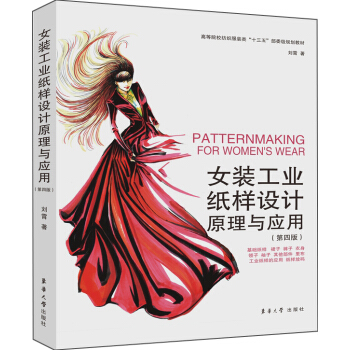
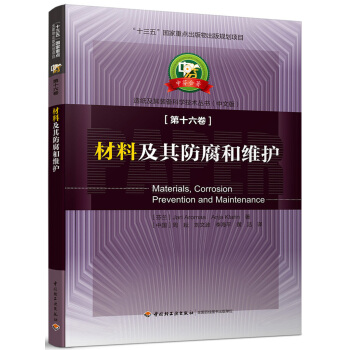
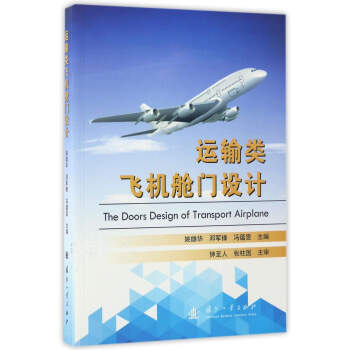
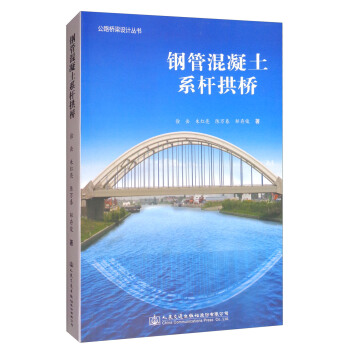


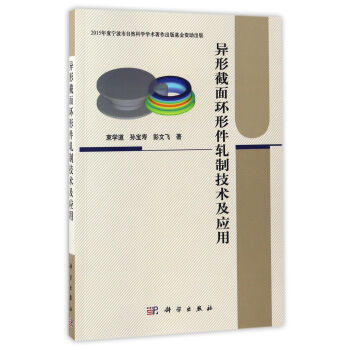
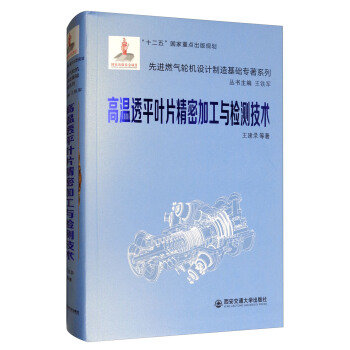

![民机先进制造工艺技术系列:飞机材料与结构检测技术 [Aircraft Materials and Structures Testing Technology] pdf epub mobi 电子书 下载](https://pic.windowsfront.com/12179132/59143065Naebbb36c.jpg)